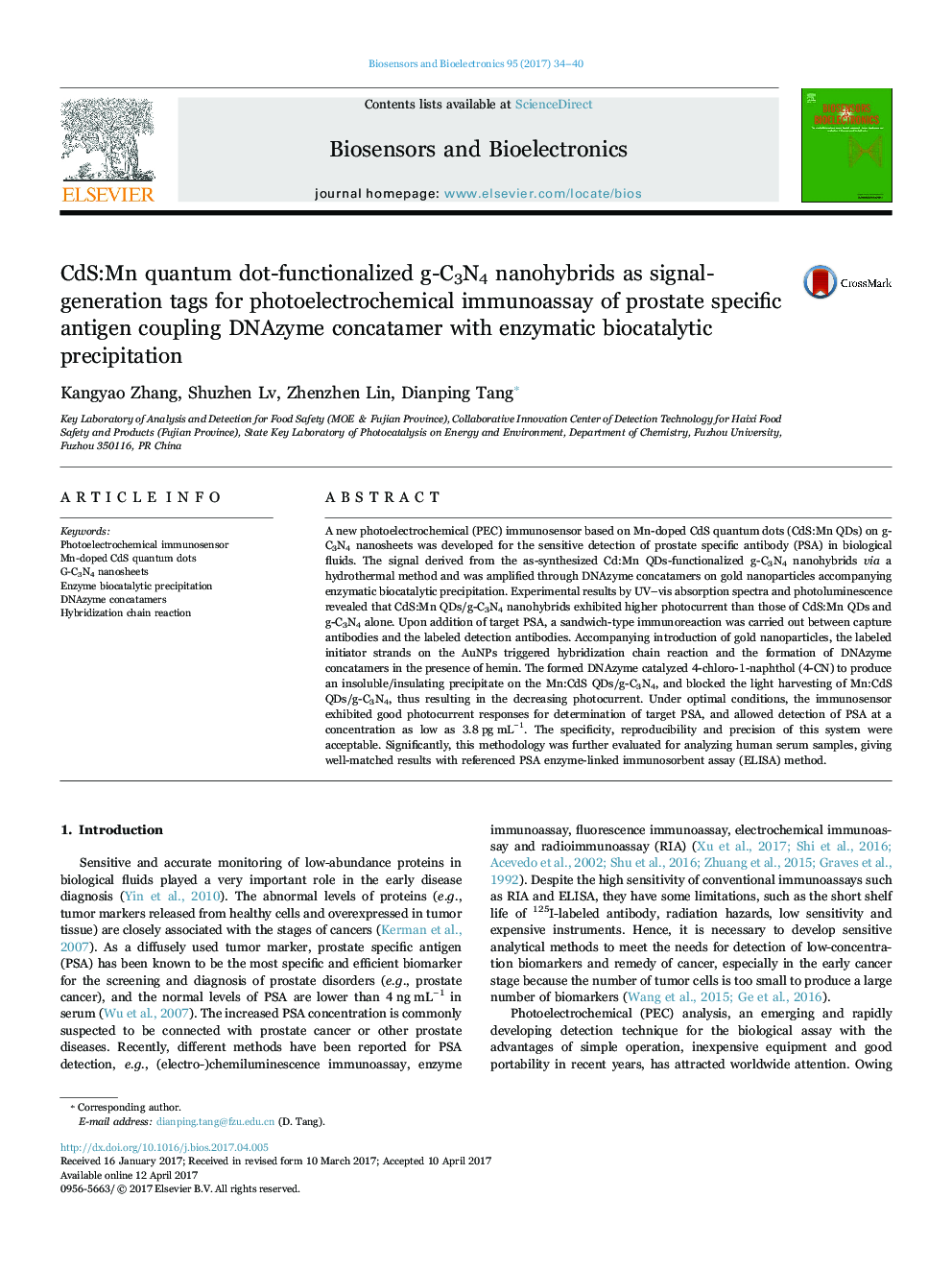| Article ID | Journal | Published Year | Pages | File Type |
|---|---|---|---|---|
| 5031490 | Biosensors and Bioelectronics | 2017 | 7 Pages |
Abstract
A new photoelectrochemical (PEC) immunosensor based on Mn-doped CdS quantum dots (CdS:Mn QDs) on g-C3N4 nanosheets was developed for the sensitive detection of prostate specific antibody (PSA) in biological fluids. The signal derived from the as-synthesized Cd:Mn QDs-functionalized g-C3N4 nanohybrids via a hydrothermal method and was amplified through DNAzyme concatamers on gold nanoparticles accompanying enzymatic biocatalytic precipitation. Experimental results by UV-vis absorption spectra and photoluminescence revealed that CdS:Mn QDs/g-C3N4 nanohybrids exhibited higher photocurrent than those of CdS:Mn QDs and g-C3N4 alone. Upon addition of target PSA, a sandwich-type immunoreaction was carried out between capture antibodies and the labeled detection antibodies. Accompanying introduction of gold nanoparticles, the labeled initiator strands on the AuNPs triggered hybridization chain reaction and the formation of DNAzyme concatamers in the presence of hemin. The formed DNAzyme catalyzed 4-chloro-1-naphthol (4-CN) to produce an insoluble/insulating precipitate on the Mn:CdS QDs/g-C3N4, and blocked the light harvesting of Mn:CdS QDs/g-C3N4, thus resulting in the decreasing photocurrent. Under optimal conditions, the immunosensor exhibited good photocurrent responses for determination of target PSA, and allowed detection of PSA at a concentration as low as 3.8 pg mLâ1. The specificity, reproducibility and precision of this system were acceptable. Significantly, this methodology was further evaluated for analyzing human serum samples, giving well-matched results with referenced PSA enzyme-linked immunosorbent assay (ELISA) method.
Related Topics
Physical Sciences and Engineering
Chemistry
Analytical Chemistry
Authors
Kangyao Zhang, Shuzhen Lv, Zhenzhen Lin, Dianping Tang,
